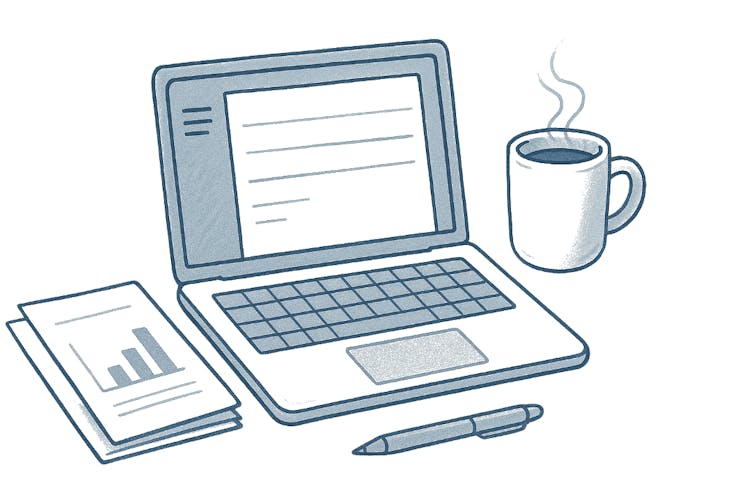An invoice collection email is a professional communication sent to clients to remind them of pending invoice payments. It serves as a critical document for tracking financial transactions, clarifying payment terms, and ensuring smooth communication about payment expectations. These emails are typically used throughout the payment cycle—right after issuing an invoice, as reminders before due dates, or for follow-up on late payments.
Invoice collection emails include essential details like invoice numbers, amounts due, due dates, and payment methods while maintaining a professional and polite tone. When used effectively, these emails not only promote timely payments but also preserve healthy client relationships by reducing ambiguities around billing.
Definition
Invoice collection emails = A tool for clear, traceable financial communication, ensuring payments are made effectively with minimal stress.

How Do Invoice Collection Email Templates Streamline Payments?
A pre-designed invoice email template transforms the payment process from chaotic to seamless. By providing consistency, clarity, and time-saving benefits, invoice collection email templates help eliminate the repetitive drafting of emails.
Save time by providing a pre-set structure.
Ensure consistency and professionalism in communication.
Reduce errors by including all critical payment information.
Simplify message segmentation and personalization for different clients.
Enable automated workflows when integrated with invoicing tools.
Templates = Faster communication, reduced errors, and a polished brand image.
Best Practices: Writing an Invoice Collection Email That Works
There’s a balance between being professional and instilling urgency. Below are best practices for creating effective invoice collection emails to ensure amicable payment completion:
Write concise subject lines. For example: “Invoice #12345 Due by [Date].”
Personalize the email. Address clients by name or business to increase engagement.
Include all payment details. Always mention the invoice number, amount owed, and payment due dates.
Use a polite yet firm tone. Avoid aggressive language; instead, opt for professionalism.
Offer convenient payment options. Provide direct payment links or easy instructions.
Keep it brief. Focus on essential information without overwhelming your recipient.

Tip
Polite language fosters cooperation. Use phrases like, “Please let us know if further details are needed to complete the payment.”
How to Ensure Invoice Collection Emails Encourage Timely Payments
Struggling with delayed payments? Effective wording in your invoice collection email can significantly impact promptness. Timely payments come from a blend of urgency and simplicity. Your emails should highlight deadlines clearly, provide easy payment options, and schedule reminders appropriately.
For instance, mention due dates in bold text and set up automated reminders at 7 days, 3 days, and 1 day before the deadline. Be sure to emphasize appealing incentives like discounts for early payments, or penalties for late payments (if applicable).

Creating Urgency Without Alienating Clients
- Politely reference deadlines: “Your payment is due in 3 days.”
- Use friendly follow-ups post-deadline, assuming good intentions.
- Simplify action steps: “Click this link to complete your payment today.”
How-to Checklist:
Use clear deadlines in subject lines and email content.
Provide payment links or QR codes for seamless payment.
Send reminders consistently (before and after due dates).
Expert Tips for Improving Invoice Collection Email Response Rates
The right communication strategy can significantly boost your response rates. Incorporate these tips to achieve better outcomes:
Send reminders before due dates. This helps keep payments top of mind.
Use polite follow-ups after the due date. Avoid sounding confrontational.
Write succinct subject lines. For example: “Invoice #56789 - Payment Required.”
Adapt tone based on client dynamics. A lenient yet professional tone works better for recurring clients.
Experiment with timing. Send emails during peak engagement hours (mid-morning or early afternoon).

Before/After Email Content
Before: “Your account is overdue. Pay now to avoid penalties.”
After: “Friendly Reminder: Invoice #56789 is overdue. Click here to settle it quickly.”
Templates: Ready-to-Use Examples for Effective Invoice Collection Emails
Template 1: Initial Invoice Email:
Subject Line: Invoice #12345 for [Your Company Name]
Dear [Client’s Name],
I hope this email finds you well. Please find attached Invoice #12345 for [service/product details], with a total amount of [$XXX].
Payment Details:
- Amount Due: [$XXX]
- Due Date: [MM/DD/YYYY]
- Payment Link/Instructions: [Include link or bank details]
Kindly reach out if any questions arise. We appreciate your prompt payment.
Best regards,
[Your Name]
[Your Contact Information]
Template 2: Reminder Email Before Due Date:
Subject Line: Upcoming Payment Due: Invoice #12345
Dear [Client’s Name],
This is a friendly reminder that Invoice #12345 for [$XXX] is due on [MM/DD/YYYY]. We want to ensure everything is in place for on-time payment.
Quick Payment Information:
- Invoice Amount: [$XXX]
- Due Date: [MM/DD/YYYY]
- Payment Options: [Include payment link or instructions]
Feel free to contact us regarding any concerns. Thank you for your continued business!
Warm regards,
[Your Name]
Template 3: Overdue Payment Email:
Subject Line: Overdue Notice: Invoice #12345
Dear [Client’s Name],
Our records show that Invoice #12345, totaling [$XXX], was due on [MM/DD/YYYY]. We understand that delays can happen, so we kindly request that you process the payment at your earliest convenience.
For your convenience, you can complete the payment by clicking here: [Payment Link]. Please feel free to reach out if you have any questions or concerns.
We value your partnership and look forward to resolving this promptly.
Best regards,
[Your Name]
[Your Contact Information]
Final Thoughts: Simplify Your Payment Collection Process Today
Professional, concise, and timely invoice collection emails can significantly enhance and simplify your payment collection process. Adopt the templates and techniques shared here, and don’t hesitate to use consistent follow-ups to maintain client engagement. Streamlined payments—and a healthier cash flow—are just an email away. Start simplifying your invoicing process today!


